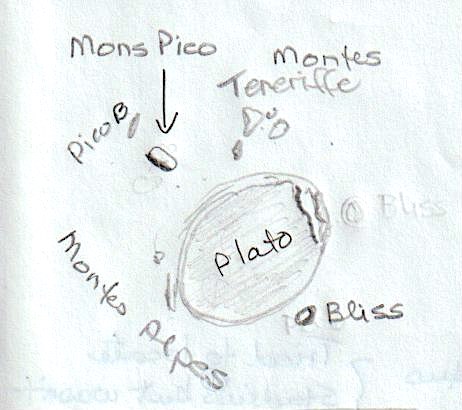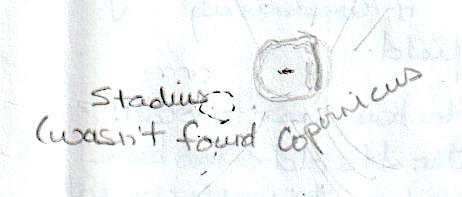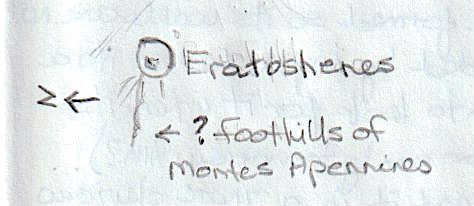I was working on both the ETM (telescope version) but also spent time in general observing and on IWLOP objects. Also viewed Jupiter and its 4 visible moons.
Lunar Phase: Waning Gibbous (71.0%)
Q-Day: +1
Moonset: 12:45 PM Moonrise: 11:15 PM
Sunrise: 6:38 AM Sunset: 7:53 PM
Location: SCO
Date: 2018-09-01 - 2018-09-02
Time: 9:00 PM - 2:00 AM
Temperature: 16º C - 15º C
SQM: 21.07 @ 10 PM, 20.88 @ 10:28 PM
Equipment: Celestron 6" Dobsonian, eyepiece unknown
Magnification: unknown
Transparency: Very Good (4)
Seeing: Very Good (4)
Clear skies to start but clouds came in for about an hour around 10 PM then cleared off to a clear sky again. Because of the treeline at SCO on the driveway side of the Warm Room (best view of the Moon after Moonrise), I didn’t start observing until 12:02 AM. Wanted to find Apollo 12 & 14 landing sites but the iPhone App didn’t cite them. However, I did spend time on the shores of various maria – Cognito, Frigoris, Imbrium, Nubium, and Oceanus Procellarum.
 |
Also of note was how heavily cratered the southern limb was. Didn’t attempt to identify them at this time as the craters on the maria and the related mountains caught my attention. Found 3 “new-to-me” features: Regiomontanus, Mons Pico, Bliss. Downside to the 3-hour observing session was that I didn’t fully explore the landing sites for Apollo 12, Apollo 14, and Ranger 7. Maybe tomorrow night/AM? |
 |
|
Maria: Cognito, Frigoris, Imbrium, Nubium, Oceanus Procellarum, Palus Putredinus
Mountains: Alpes, Apennine, Carpatus, Mons Pico & Pico B, Riphaeus, Tenerife, Vallis Alpes
Craters (East of Mare Nubium): Albategnius, Arzachel, Blanchinus, Herschel, Le Caille, Ptolemaeus, Purbach, Regiomontanus, Thebit, Werner.
Craters (East Shores of Mare Nubium): Archimedes, Aristillus, Autolychus, Cassini
Craters (North of Mare Nubium): Bliss, Lansberg, Plato, Reinhold
Other Craters: Copernicus (south of Montes Carpatus), Eratosthenes (southern Mare Imbrium).
Tried to locate Stadius but wasn’t successful. Contacted Dave Chapman as to how best locate Stadius. He described it as a “ghost crater”. It’s old and has been flooded by lava when the mare formed so its walls are not too high, and it has been eroded by impacts so it’s a bit camouflaged. The trick is to look for it when it’s near the terminator (tonight or early tomorrow AM?) when the low sun angle will cast it in a more obvious relief.
